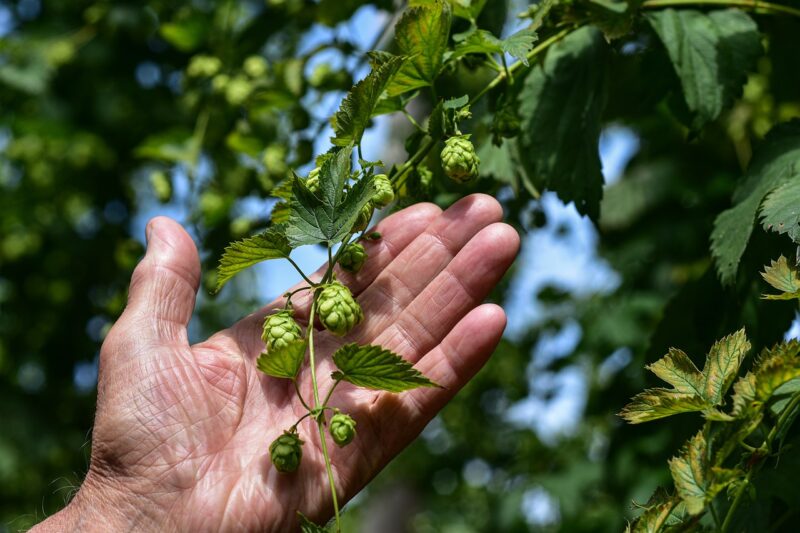Exploring the Benefits of Home Brewing: How to Start Making Your Own Beer
November 14, 2024

Home brewing, the art and science of making beer at home, is experiencing a renaissance and for good reason. With a plethora of craft beers available, why would anyone want to brew their own? The answer lies in the unique combination of creativity, control, and community that home brewing offers. Let’s delve into the many joys and benefits of this rewarding hobby, alongside a comprehensive guide on how to begin your brewing journey.
1. The Rise of Home Brewing
In the past decade, there has been a significant resurgence in the popularity of home brewing. This movement can be attributed to several factors:
- Craft Beer Boom: As craft breweries pop up everywhere, beer enthusiasts are increasingly discerning about their drinks, prompting many to explore local flavors and styles at home.
- DIY Culture: A growing inclination towards do-it-yourself projects has inspired people to create their own beer from scratch, highlighting their individual tastes and preferences.
- Cost-Effectiveness: Brewing your own beer is often cheaper than buying craft beer, especially when producing in larger batches.
The combination of these factors makes home brewing a compelling choice for anyone interested in beer.
2. Benefits of Home Brewing
Home brewing offers numerous benefits:
A. Personalization:
One of the most significant advantages of home brewing is the ability to customize your brew. You can select the specific types of hops, malt, and yeast to develop flavors that match your palate. Do you prefer an extra hoppy IPA or a malty stout? The choice is yours!
B. Quality Control:
When you brew your own beer, you have complete control over the brewing process. This transparency means you can ensure your beer is free from unwanted additives or preservatives, adhering to your standards of quality.
C. Cost Savings:
While the initial setup costs for brewing equipment may seem high, the overall savings can add up. Brewing in larger batches can significantly reduce your cost per pint compared to purchasing craft beers.
D. Community & Connection:
Home brewing creates opportunities for connection with like-minded individuals. Engage with local home brew clubs, attend workshops, or participate in competitions to meet others who share your passion.
E. Satisfaction & Fun:
The process of brewing is immensely rewarding; from selecting ingredients to witnessing the fermentation, every step brings satisfaction. Sharing your homemade beer with friends and family adds to the enjoyment, showcasing your accomplishments.
3. Getting Started with Home Brewing
Embarking on your home brewing journey may seem daunting, but it’s straightforward with the right preparation. Here’s a step-by-step guide to help you brew your first batch of beer:
Step 1: Gather Your Equipment
Start with the essentials:
- Brew kettle
- Fermentation vessel
- Airlock
- Sanitizer
- Bottles or kegs for storage
- Hydrometer for measuring specific gravity
- Thermometer
You can purchase starter kits from brewing suppliers that include many of these items.
Step 2: Select Your Recipe
Choose a beginner-friendly recipe that clearly outlines the ingredients and steps involved. Common starting points include pale ales, brown ales, or wheat beers. Follow the recipe closely initially before experimenting.
Step 3: Sanitization is Key
Sanitation is crucial in brewing because it prevents infections that can ruin your beer. Thoroughly clean all your equipment with a suitable sanitizer before you start brewing.
Step 4: Brewing Process
The brewing process generally involves the following steps:
- Mashing: Steep crushed malt in hot water to convert starches into sugars.
- Boiling: Boil the mixture (wort) and add hops for bitterness and flavor.
- Cooling: Cool down the wort rapidly to a temperature suitable for fermentation.
- Fermentation: Transfer the cooled wort to your fermentation vessel, pitch the yeast, and seal it with an airlock.
- Bottling: Once fermentation is complete, transfer the beer to sanitized bottles, adding a small amount of sugar to promote carbonation.
Step 5: Patience is a Virtue
After bottling, patience is essential. Allow your beer to carbonate for about 1-2 weeks before chilling and tasting your first creation.
4. Common Challenges and Solutions
While brewing can be a fun and rewarding endeavor, you may encounter challenges:
A. Off-Flavors:
Developing off-flavors can result from various issues such as poor sanitation or incorrect fermentation temperature. Make sure to sanitize all equipment thoroughly and maintain a consistent temperature during fermentation.
B. Over-carbonation or Under-carbonation:
This can happen if too much or too little sugar is added at bottling. It’s essential to measure precisely and follow your recipe closely.
C. Stuck Fermentation:
If fermentation stops too soon, check the fermentation temperature and yeast health. Providing proper conditions for your yeast is crucial for a successful brew.
5. Final Thoughts
Home brewing is not just about producing beer; it’s about the journey of creativity and discovery. Whether you brew for relaxation, family gatherings, or the pure joy of crafting something unique, the benefits are far-reaching.
As you embark on your home brewing adventure, remember to experiment, learn from your mistakes, and, most importantly, have fun. With each batch, you’ll grow more confident in your brewing abilities, and soon you’ll be sharing your handmade creations with friends and family, savoring the fruits of your labor.
So gather your ingredients, put on your brewing apron, and dive into the wonderful world of home brewing!







